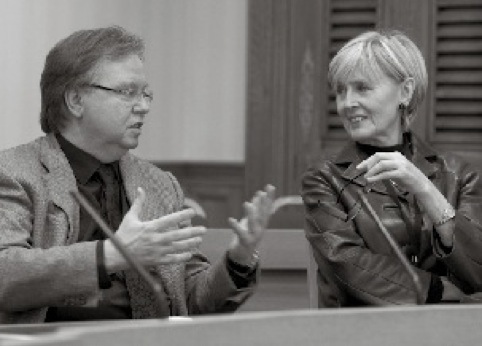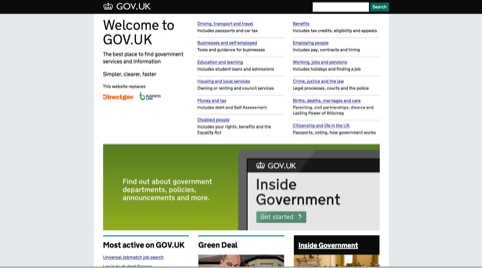Renewing public services through design
‘Meeting needs, saving money, humanising services, engaging citizens.’ These are just a few of the things design can do for UK public services, according to a new report from the Design Commission.

The report – Restarting Britain 2: Design and Public Services – goes beyond the familiar rhetoric of design’s transformative powers (particularly in economically straightened times). Instead it provides a roadmap of recommendations about how to build design into public services, and examples of well-designed public services from across the UK and Europe.
One of the report’s key tasks is to not only convince Government and public sector organisations of the benefits of design, but also to explain to them what design is, in this context. As co-author Barry Quirk, chief executive of Lambeth Council, says, ‘We’re talking about hard disciplines, not soft furnishings.’
Interestingly, the Design Commission puts the onus for good public design both on Government and on industry. So while Government, for example, is urged to provide better training in service design principles and improved design commissioning, the design sector is called on to provide better evidence of its impact, and to better promote its public-sector work (potentially through a public service design awards scheme).
Baroness Kingsmill, who also co-authored the report, says, ‘We need to change Government’s attitude to design. But we also need to convince the design community that public services are a valid use of design skills.’

The report is also joined-up in terms of ownership. The Design Commission is a standing body featuring representatives from Parliament, industry, academia and the design sector. The Design Council, Design Business Association and D&AD are among those represented.
This means different bodies can take ownership of different proposals. The DBA, for example, already runs a suppliers’ register and thus is well-placed to help co-ordinate a directory of experienced designers. The Design Council, which has previously debated the issue of design measurement, can lead on providing better evidence of design. If all bodies can work in their specialist areas then (in theory) some neutrality and progression can result.
It is proposed that overall leadership would reside with Cabinet Office – the department responsible for efficiency and reform and the one that – Treasury aside – currently holds the purse strings.
The report promotes the concept of user-focused service and strategic design as a means to save money (among other things). ‘Design may sound an improbable suggestion,’ it reads. ‘The design sector has an undeniable reputation for fuelling the whims of fashion and for pursuing creativity at someone else’s expense.’
It adds, ‘We are not advocating the frivolous use of public money for vanity projects. Rather, we are concerned with the application of certain methodologies… in the fields of social, service and strategic design.’
It places user-focused design in contrast to the existing norm for public service development, which it describes as ‘disjointed incrementalism’, or ‘trying to reengineer what exists, rather than stepping back and thinking about what is actually needed’. Exemplar initiatives include the Government Digital Service’s excellent Gov.uk project – driven by a team of designers and developers working inside Cabinet Office – and the Helsinki Design Lab, set up to develop strategic design expertise in Finnish government and public services.

As the report concludes ‘Often the solutions seem more like common sense than radically new ideas, particularly once things are appreciated from a user point of view.’
The space to make change happen, it says, ‘relies on people having good ideas – which some people are naturally better at, and designers happen to be very good at. Having another idea – not stopping when you’ve had one good one – is the modus operandi.’
And as the report notes, the current context of over-stretched public services and straightened finances provides the perfect opportunity for radical design thinking: ‘This may be ambitious but it is achievable… Let’s not waste a good crisis.’
Speaking at the report’s launch, Baroness Kingsmill said she was planning a working group to develop and see through the proposals in the report. She called for ‘evangelists’ to promote design thinking in Government and beyond. These evangelists will hopefully not be hard to find.
You can read the report in full here.





Timely piece on an important report. We do indeed need innovatory approaches ‘in economically straightened times’ and ‘over-stretched public services and straightened finances’. Design has to be brought in as major tool in this challenging environment. Mind you, watch the jargon… “disjointed incrementalism” … Whit? whit?
Twitter: @EdwardHarkins